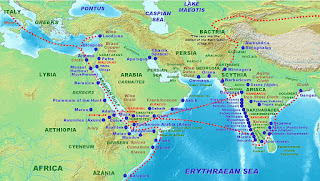Tracing the Footsteps of Faith Amidst Turbulent Tides
Nestled off the rugged coast of Northumberland, England, lies a small yet storied island that has left an indelible mark on Christian history - Lindisfarne, also known as Holy Island. Steeped in legend and lore, Lindisfarne's rich tapestry of Celtic influence, Viking invasions, and enduring faith continues to captivate pilgrims and historians alike.
At the heart of Lindisfarne's legacy is the revered figure of Saint Cuthbert, a 7th-century monk and bishop whose life and teachings have become synonymous with the island's spiritual heritage. Cuthbert's asceticism, humility, and deep devotion to God made him a beloved figure among both monks and laypeople, and his tomb at Lindisfarne Priory remains a place of pilgrimage to this day.
The Christian presence on Lindisfarne dates back to the early Celtic Church, whose monks established a monastery on the island in the 6th century. Under the guidance of figures like Aidan and Cuthbert, Lindisfarne became a center of learning, spirituality, and missionary outreach, spreading the Gospel throughout the Anglo-Saxon kingdoms of Northumbria and beyond.
However, Lindisfarne's tranquility was shattered in the late 8th century by the arrival of Viking raiders, who plundered the monastery and laid waste to its sacred relics and manuscripts. The Lindisfarne Gospel, a priceless illuminated manuscript created by the monks, miraculously survived the Viking onslaught and is now housed in the British Library, serving as a testament to the enduring power of faith in the face of adversity.
Despite the devastation wrought by the Vikings, Lindisfarne endured, and a new chapter in its history began with the construction of Lindisfarne Castle in the 16th century. Perched atop a rocky outcrop overlooking the North Sea, the castle served as a strategic stronghold against Scottish raids and later as a private residence, its imposing silhouette a reminder of Lindisfarne's tumultuous past.
Today, Lindisfarne remains a place of pilgrimage and reflection, where visitors can explore the ruins of the medieval priory, wander along windswept beaches, and trace the footsteps of saints and monks who once walked its hallowed shores. The island's tranquil beauty and spiritual resonance continue to draw seekers and believers from all walks of life, offering a sanctuary of peace and prayer amidst the ebb and flow of time.
As we contemplate Lindisfarne's enduring legacy, we are reminded of the resilience of the human spirit and the transformative power of faith in the face of adversity. May Lindisfarne's story inspire us to seek out our own sacred islands of refuge, where the light of God's love shines bright amidst life's storms, guiding us ever onward on our journey of faith.








